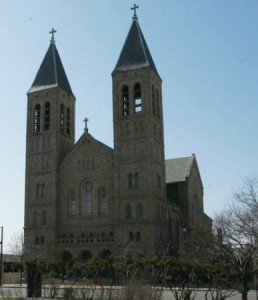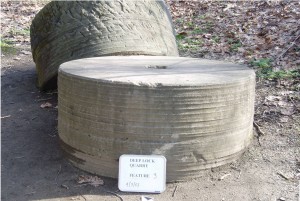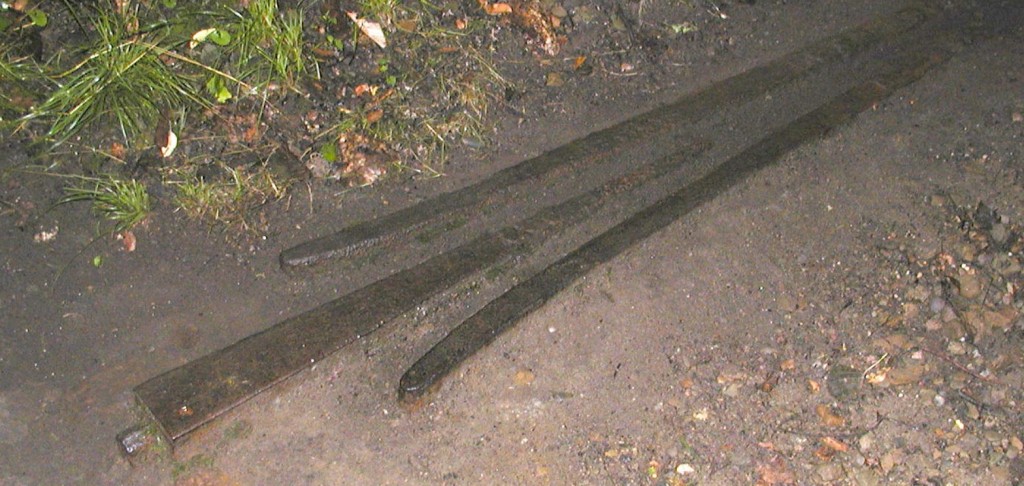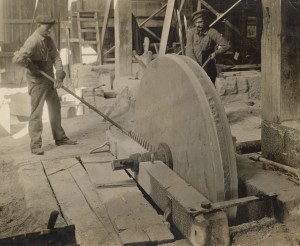The canal and subsequently the railroad first sent stones both north and south in Ohio. For example, it took 125 train-cars of sandstone block to build St. Bernard’s church in downtown Akron (1904). The Summit County Courthouse, built in 1908 of Berea Sandstone, replaced the 1843 courthouse that was built of lesser quality sandstone found nearby.
A Cleveland Stone Company Deep Lock Quarry ledger dating from 1914 to 1918, indicates they processed 403 orders for stone. These orders included grindstone for the new steel and automotive industry, pulp stones for processing paper, rip-rap for harbor walls along Lake Erie, and flag stones for the building industry. Pulp stone was shipped as far as Oregon and California for the paper industry in 1916.

Summit County Courthouse with St. Bernard’s in background. (www.summitmemory.org)

St. Bernard’s Church in Akron, OH. Built of Berea sandstone. (www.ohio.com)



